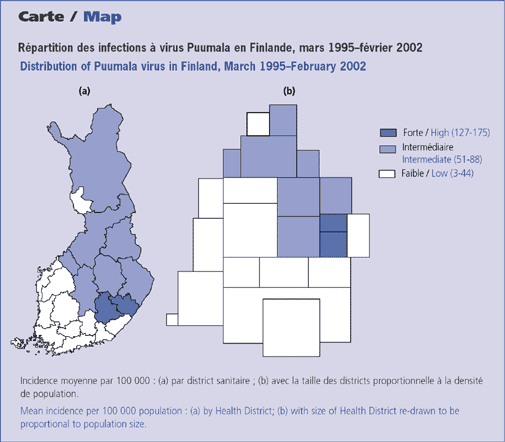Group Group V ((−)ssRNA) Genus Hantavirus Higher classification Hantavirus | Family Bunyaviridae Scientific name Puumala virus Rank Species | |
 | ||
Similar Seoul virus, Bunyaviridae, Bank vole, Andes virus, Red‑backed vole | ||
Puumala virus
Puumala virus (PUUV) is a species of hantavirus. Humans infected with the virus may develop a haemorrhagic fever with renal syndrome (HFRS) known as nephropathia epidemica. Puumala virus HFRS is lethal in less than 0.5% of the cases.
Contents
Puumala virus is named after a municipality in Finland. The virus is found predominantly in Scandinavia and Finland, although it has also been reported elsewhere in Northern Europe, Poland and Russia. Because the bank vole (Myodes glareolus) acts as a reservoir for the virus, nephropathia epidemica cases track with the vole population in a three- to four-year cycle. Humans are infected through inhalation of dust from vole droppings.
It has been theorized that Puumala virus, unlike other members of the genus Hantavirus, may also have lethal effects on its rodent host.
In August 2014 was announced the death of an Israeli researcher studying the behavior of the bank vole in Finland. She had been affected by the Puumala virus which caused a complete breakdown of her immune system.
Puumala virus was discovered and named in 1980 by researchers in Finland.
